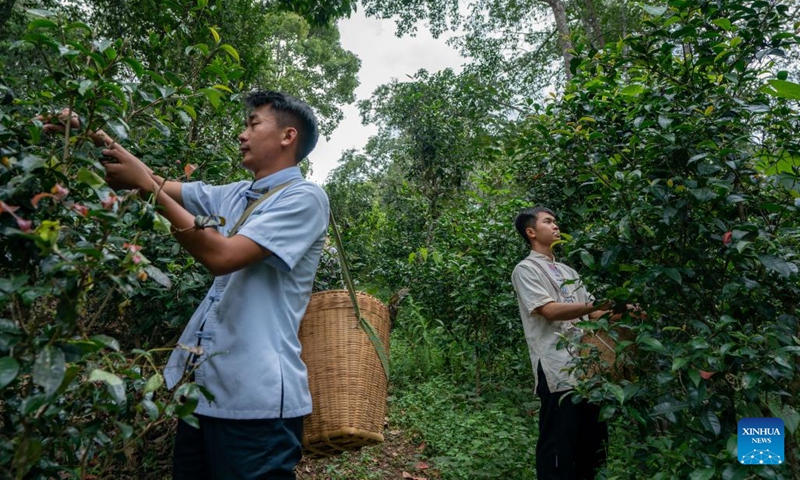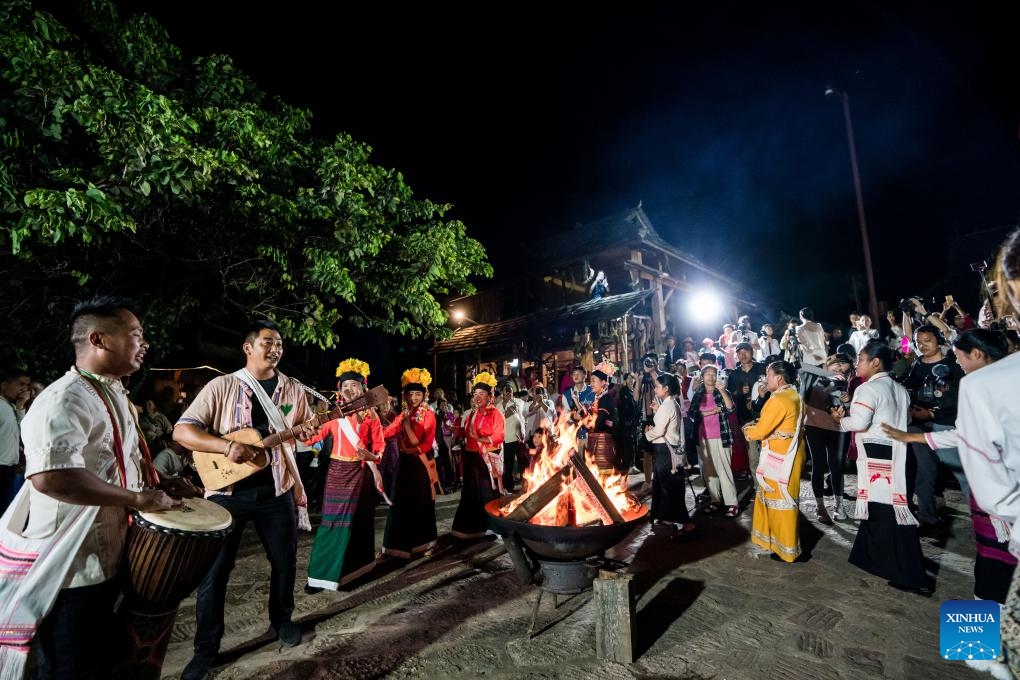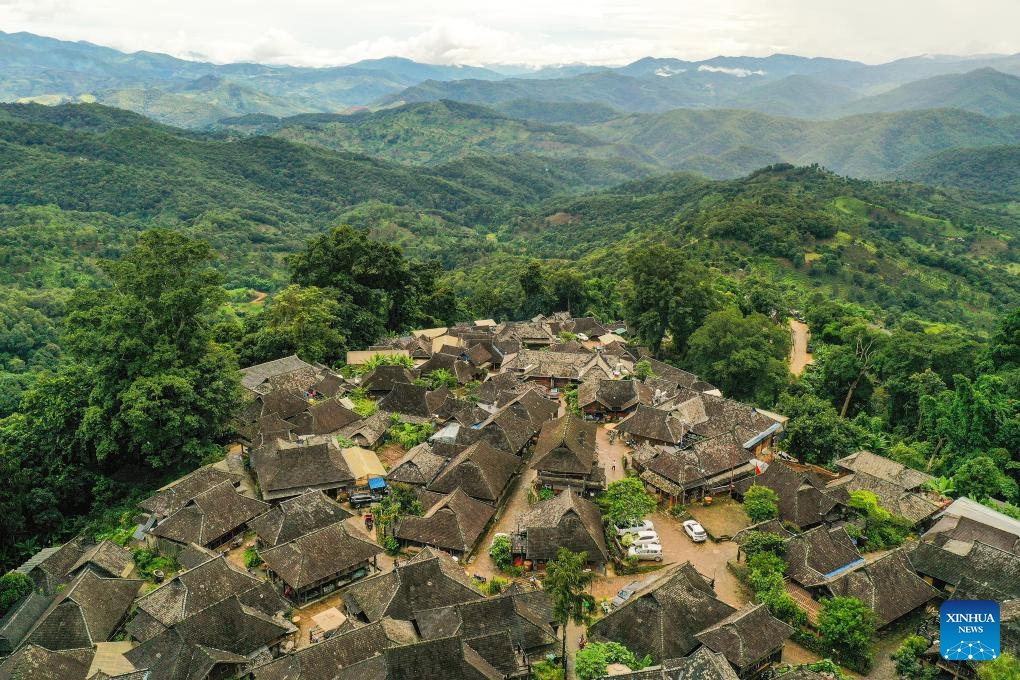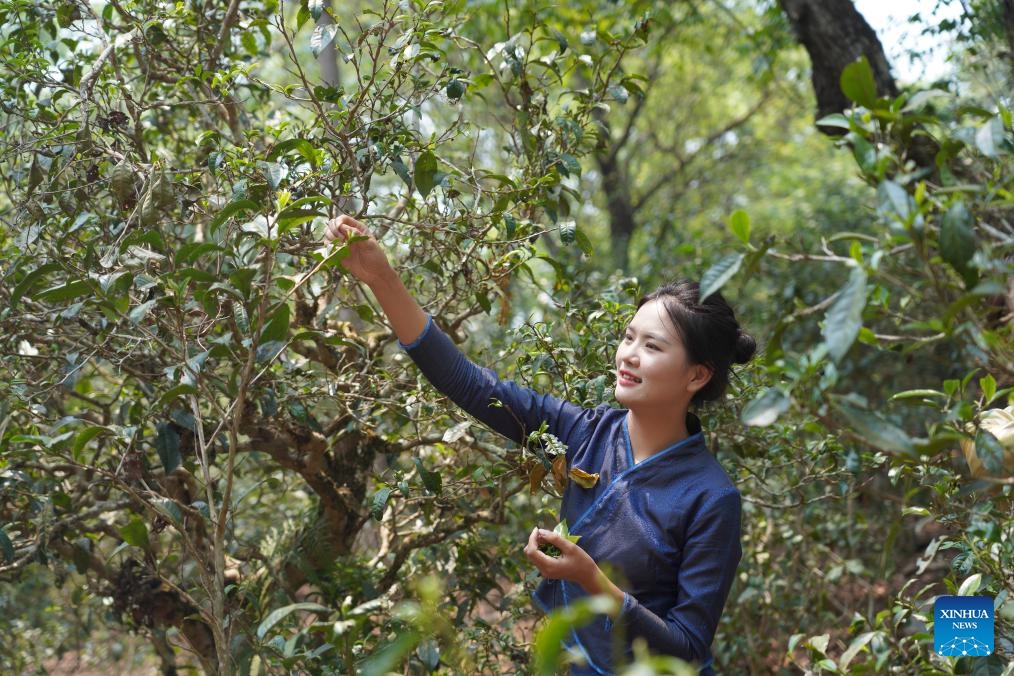
Farmers pick tea leaves at an old tea forest area of Jingmai Mountain in Pu'er, southwest China's Yunnan Province, Sept. 14, 2023.(Photo: Xinhua)

People dance in a traditional village in Jingmai Mountain of Pu'er City, southwest China's Yunnan Province, Sept. 17, 2023.(Photo: Xinhua)

This aerial photo taken on Aug. 29, 2023 shows a traditional village in Jingmai Mountain in Pu'er, southwest China's Yunnan Province.(Photo: Xinhua)

A farmer picks tea leaves at an old tea forest area of Jingmai Mountain in Pu'er, southwest China's Yunnan Province, April 19, 2023.(Photo: Xinhua)
The Cultural Landscape of Old Tea Forests of Jingmai Mountain in Pu'er, southwest China, was inscribed on the UNESCO World Heritage List on Sunday.
At its extended 45th session ongoing here in Riyadh, Saudi Arabia, the UNESCO World Heritage Committee examined the site nominated by China and added it to the list as a cultural property, making it China's 57th World Heritage site.
The decision heralds the great vitality that lasts today of the old tea forests and related cultural landscape in Jingmai Mountain, Lancang Lahu Autonomous County of southwestern Yunnan Province, one of the regions that practiced the earliest use of tea resources and had a significant influence on the tea culture of the world.
Consisting of five large-scale, well-preserved old tea forests, nine traditional villages within them, and three protective-partition forests between them, the landscape stands out as an example of rich tea culture centered on the ancient practices of cultivating and preserving the old tea forests.
The forests have been well managed under a unique conservation system that respects the cultural and biological diversity and sustainable utilization of natural resources, which combines government management and grassroots autonomy, built upon the foundation of traditional tea ancestor beliefs.
The system respects local climate conditions, topographical features, and flora and fauna populations, achieving the conservation of cultural and biological diversity and sustainable utilization of natural resources.
"The inclusion highlights the significance of China's position in the birth, planting, and trade of tea and the dissemination of tea culture worldwide," Li Qun, head of China's National Cultural Heritage Administration, told Xinhua at the UNESCO extended session.
Around the 10th century, the ancestors of the Bulang ethnic group migrated to Jingmai Mountain, where they discovered and built knowledge on wild tea trees.
Gradually, they adapted to the forest ecosystem along with the Dai people and other ethnic groups who came later to the region, to create the unique understory tea cultivation model, a traditional planting practice that has survived the widespread modern tea plantation technology.
Throughout thousand years of preservation and management, the landscape took its shape as a tea forests-plantations symbiosis that embodies the idea of harmony with nature, added Li.
The committee recognized that the site meets World Heritage criteria III and V, acknowledging its universal value for being "a typical testimony of the understory tea cultivation traditions of the indigenous people," and as "an outstanding example of sustainable cultural landscapes of mountain forest farming," according to an executive summary newly published on the UNESCO website.
The extended World Heritage Committee session was held from Sept. 10 to 25 to examine a total of 53 nominations of cultural, natural, and combined sites to the World Heritage List.







